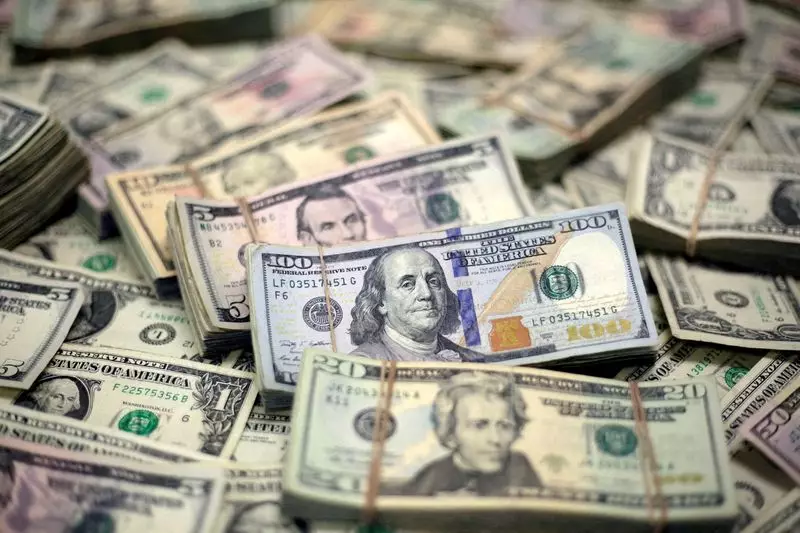As the global economy stands at a crossroads, recent trends indicate a notable decline in the value of the U.S. dollar, particularly highlighted in the Asian markets on Monday. Investors appear to be positioning themselves for a possible significant shift in economic policy in light of the upcoming U.S. presidential election. Should the Federal Reserve decide to cut interest rates, as many analysts anticipate, there are profound implications for the bond market and broader financial conditions.
The euro displayed resilience during this period, climbing 0.6% to reach $1.0901, and is on the brink of testing stronger resistance levels. Similarly, the dollar experienced a 0.9% decline against the yen, falling to a critical threshold that could indicate further weakening. Market stability seems increasingly tenuous as the dollar index adjusted slightly downwards to 103.63.
Political Polarization and Its Economic Implications
The political landscape is incredibly polarized, with major candidates like Kamala Harris and Donald Trump nearly tied in the polls. The election outcome is clouded by uncertainties, making it a volatile time for investors, particularly when considering the ramifications each candidate’s policies could have on the economy. Trump’s policies might encourage inflationary pressures, while Harris is perceived as more likely to maintain the status quo.
With the election looking so competitive, some speculate that the initial decline in the dollar’s value this week could be linked to a recent poll showing Harris with a narrow lead in Iowa. This development might signify a shift in voter sentiment that could have cascading effects across multiple battleground states. Analysts have pointed out that Harris has gained traction, particularly among female voters, shaking up what many previously considered a more predictable race.
There is a prevailing sentiment in the markets that the Federal Reserve will opt for a modest interest rate cut of 25 basis points in the upcoming meeting. The expected reduction would lower rates to the 4.50%-4.75% band, backed by a powerful 99% probability reflected in futures markets. The anticipation surrounding rate cuts can often produce immediate reactions in various asset classes, and this time is no different.
According to economists from Goldman Sachs, there are expectations for continued rate reductions into the first half of 2025, but they express uncertainty about both the speed of these cuts and the ultimate destination for rates. The possibility of a split Congress following the election adds another layer of unpredictability, with different policy agendas likely to influence market confidence.
Global Responses and Economic Strategies
Several central banks, including the Bank of England, are also navigating similar waters. The BoE is expected to follow suit with a 25 basis point cut amid turbulent conditions within the UK’s financial landscape. In contrast, the Norwegian central bank maintains a more cautious approach, suggesting that varying strategies will emerge as governments respond to their internal and external pressures.
Meanwhile, the Riksbank is reported to be considering more significant cuts, potentially easing by 50 basis points as political and economic uncertainty looms in Sweden. Amid these discussions, Australia’s Reserve Bank maintains a steadier course for now, a contrast that underscores differing national priorities amid the global context.
In parallel with global monetary policy adjustments, China is gearing up for significant economic stimulus measures at its National People’s Congress. The potential issuance of more than 10 trillion yuan ($1.4 trillion) in additional debt is aimed at revitalizing a sluggish economy. Analysts anticipate that this stimulus could create ripple effects across international markets, reshaping investor expectations and attracting capital inflow.
As central banks around the world coordinate, the upcoming week could be pivotal. Multiple meetings from key financial institutions may lead to major policy shifts that further alter the economic landscape. Given the interconnectedness of global markets, any change, whether in the U.S., UK, or China, is likely to have broad ramifications.
In this intricate tapestry of financial markets, currency values, and political dynamics, uncertainty remains a constant companion. The U.S. dollar’s perceived weakness, coupled with the impending election and anticipated interest rate cuts, alongside global stimuli, paints a complex economic picture. Investors, policymakers, and analysts will need to keep a close watch on developments, as the decisions made this week could have lasting implications on international economic stability and individual portfolios.


Leave a Reply